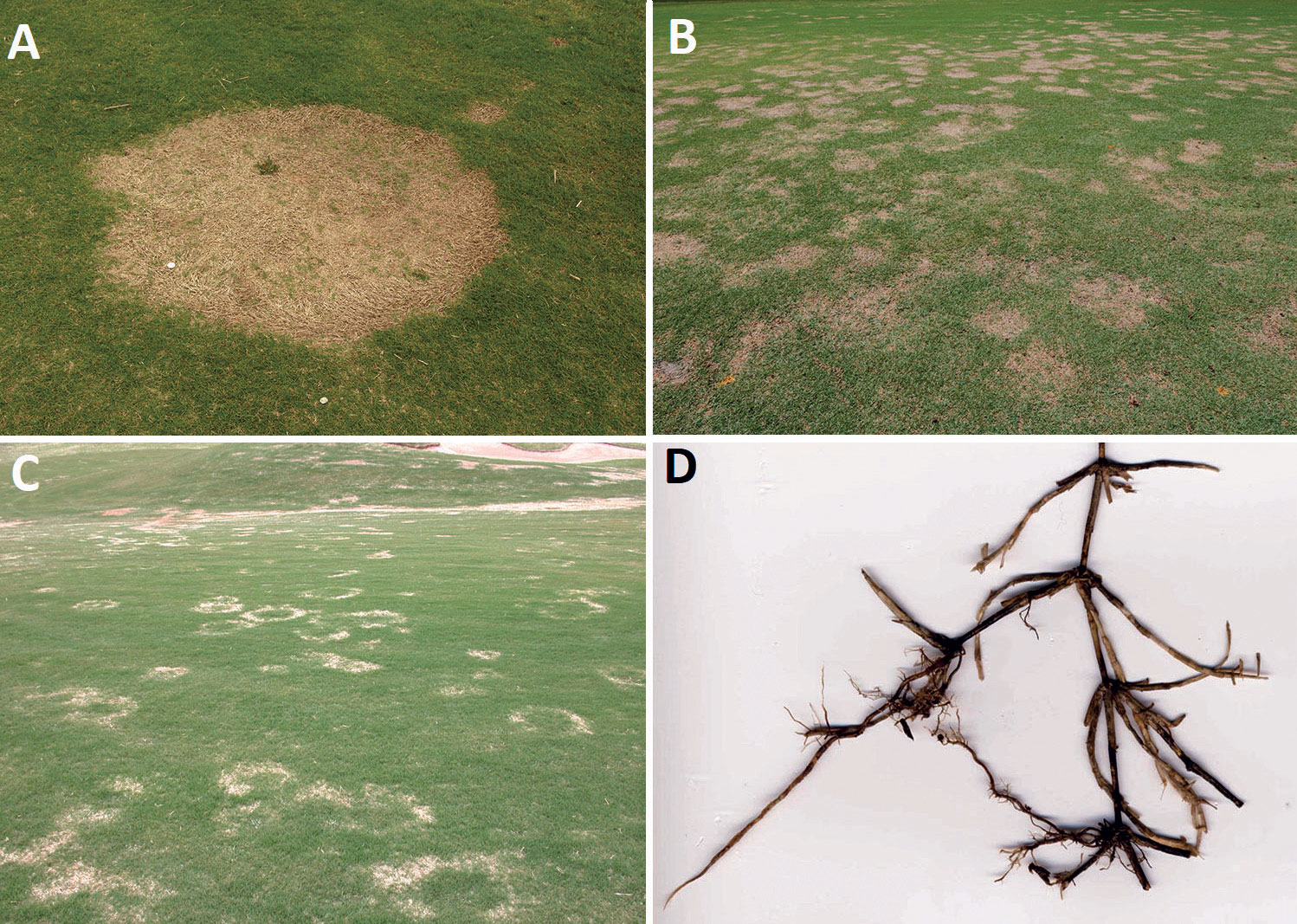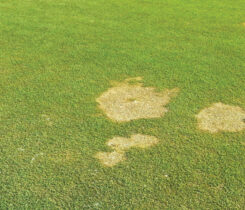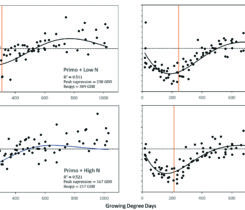Spring disappointment with spring dead spot

Photo: Mike Kenna, Ph. D.
Spring dead spot (SDS) is a destructive disease that affects bermudagrass but rarely harms zoysiagrass or buffalograss. This fungal disease can lead to significant damage and economic losses on golf courses if uncontrolled.
The name stems from its characteristic symptom, where circular patches of dead or dormant grass emerge in the spring as bermudagrass begins its active growth phase. These patches are typically 6 inches to 3 feet in diameter and are more pronounced in colder regions with prolonged winter conditions.
The disease is caused by three species of Ophiosphaerella, with Ophiosphaerella herpotricha being the most common and aggressive pathogen. The fungus overwinters in infected plant debris and thatch, becoming active as temperatures rise in the spring. The spread primarily occurs through the movement of infected plants or infested soil by equipment, people, animals and running water.
The pathogen attacks the roots and rhizomes, causing necrosis and hindering the plant’s ability to take up water and nutrients. When the turfgrass breaks dormancy, the result is the formation of dead patches, which can persist throughout the spring and into early summer.

Spring dead spot (SDS) symptoms on bermudagrass: A) Bleached color of the dead plants, B) Severe SDS on a golf course fairway, C) Less severe circular and arc patterns of SDS on a golf course fairway, and D) Dead bermudagrass plant with blackened roots, crown, rhizomes and stolons. (Photo: Nathan Waler, Ph.D., Oklahoma State University, EPP-7665)
Several factors contribute to the development of SDS. The disease is more severe in poorly drained soils with high thatch buildup. Compacted soils, improper irrigation and lack of proper cultural practices can also exacerbate the problem.
Management of SDS involves an integrated approach. Cultural practices such as proper mowing, adequate irrigation and avoiding excessive nitrogen fertilization are essential to maintain a healthy bermudagrass stand. Aerating the soil to reduce compaction and promote good drainage can also be beneficial. Newer bermudagrass cultivars selected for improved cold tolerance and resistance to SDS are less susceptible.
Fungicide applications are critical in controlling SDS. Experts recommend applying fungicides preventatively during the fall and early spring to protect the turfgrass from infection and minimize the impact of the disease. Fungicides containing active ingredients such as azoxystrobin, propiconazole or thiophanate-methyl have shown effectiveness.
Understanding what causes SDS and implementing proper management practices, including cultural techniques and fungicide applications, are crucial in preventing and controlling the disease.












